 |
 |
Our enthusiastic and extremely knowledgeable perennials team is here to answer your questions and help you choose the best perennials for your situation. There’s always something in bloom for sun, shade, butterflies, birds or deer resistance as well as a variety of bulbs for your space.
Stroll through our time-tested favorites and introduce yourself to the newest varieties. We garden with perennials too; we love them and it shows!
|
193 found, showing page 5 of 13
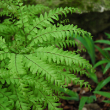
Height: 18 inches
Spread: 24 inches
Sunlight: partial shade, full shade
Hardiness Zone: 1b
Description:
A wonderful low maintenance selection perfect for adding delicate texture to gardens and patio containers; arching fronds of light green turn beautiful golden yellow in the fall; prefers shaded areas with rich and moist well drained soil
Ornamental Features:
Northern Maidenhair Fern is primarily valued in the garden for its cascading habit of growth. Its crinkled ferny compound leaves are light green in color. As an added bonus, the foliage turns a gorgeous gold in the fall. The black stems are very colorful and add to the overall interest of the plant.
Landscape Attributes:
Northern Maidenhair Fern is an herbaceous fern with a shapely form and gracefully arching fronds. It brings an extremely fine and delicate texture to the garden composition and should be used to full effect.
This is a relatively low maintenance plant, and usually looks its best without pruning, although it will tolerate pruning. Deer don't particularly care for this plant and will usually leave it alone in favor of tastier treats. It has no significant negative characteristics.
Northern Maidenhair Fern is recommended for the following landscape applications:
- Mass Planting
- Rock/Alpine Gardens
- General Garden Use
- Groundcover
- Naturalizing And Woodland Gardens
Planting & Growing:
Northern Maidenhair Fern will grow to be about 18 inches tall at maturity, with a spread of 24 inches. Its foliage tends to remain dense right to the ground, not requiring facer plants in front. It grows at a slow rate, and under ideal conditions can be expected to live for approximately 15 years. As an herbaceous perennial, this plant will usually die back to the crown each winter, and will regrow from the base each spring. Be careful not to disturb the crown in late winter when it may not be readily seen!
This plant does best in partial shade to shade. It prefers to grow in moist to wet soil, and will even tolerate some standing water. It is not particular as to soil pH, but grows best in rich soils. It is highly tolerant of urban pollution and will even thrive in inner city environments, and will benefit from being planted in a relatively sheltered location. Consider applying a thick mulch around the root zone over the growing season to conserve soil moisture. This species is native to parts of North America, and parts of it are known to be toxic to humans and animals, so care should be exercised in planting it around children and pets. It can be propagated by division.

2-3 foot leathery fronds stay green all winter, giving it its name. Silvery fiddleheads emerge in early spring. USDA 3-9
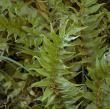
Upright light green tapered fronds. Naturalizing.USDA 4-9
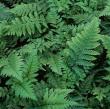
Grayish-green, deeply cut, leathery fronds. Easily grown in average, medium, well-drained soil. USDA 3-8
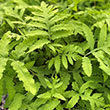
Tolerates moisture, Clay, rabbits, & deep Shade. Naturalizing. USDA 4-8
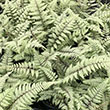
Upright silvery foliage. Maroon midribs. Tolerates seep shade. USDA 4-8
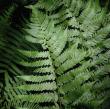
Height: 4 feet
Spread: 3 feet
Sunlight: partial shade, full shade
Hardiness Zone: 4b
Description:
This tall fern is a great vertical accent; has graceful, arching fronds; keep evenly moist, provides habitat and shelter for birds and bees.
Ornamental Features:
Dixie Wood Fern is primarily valued in the landscape or garden for its cascading habit of growth. Its tiny ferny compound leaves remain green in color throughout the year.
Landscape Attributes:
Dixie Wood Fern is an herbaceous evergreen fern with a shapely form and gracefully arching fronds. It brings an extremely fine and delicate texture to the garden composition and should be used to full effect.
This is a relatively low maintenance plant, and should be cut back in late fall in preparation for winter. Deer don't particularly care for this plant and will usually leave it alone in favor of tastier treats. It has no significant negative characteristics.
Dixie Wood Fern is recommended for the following landscape applications:
- Mass Planting
- General Garden Use
- Naturalizing And Woodland Gardens
Planting & Growing:
Dixie Wood Fern will grow to be about 4 feet tall at maturity, with a spread of 3 feet. Its foliage tends to remain dense right to the ground, not requiring facer plants in front. It grows at a medium rate, and under ideal conditions can be expected to live for approximately 15 years. As an evegreen perennial, this plant will typically keep its form and foliage year-round. As this plant tends to go dormant in summer, it is best interplanted with late-season bloomers to hide the dying foliage.
This plant does best in partial shade to shade. It prefers to grow in average to moist conditions, and shouldn't be allowed to dry out. It is particular about its soil conditions, with a strong preference for rich, acidic soils. It is somewhat tolerant of urban pollution, and will benefit from being planted in a relatively sheltered location. Consider applying a thick mulch around the root zone over the growing season to conserve soil moisture. This particular variety is an interspecific hybrid, and parts of it are known to be toxic to humans and animals, so care should be exercised in planting it around children and pets. It can be propagated by division; however, as a cultivated variety, be aware that it may be subject to certain restrictions or prohibitions on propagation.
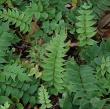
Arching, glossy, dark green fronds. Naturalizing. Evergreen. USDA 6-10
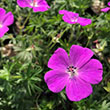
Polific magenta blooms. Naturalizing. Groundcover. USDA 3-9
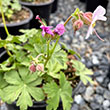
Long-lasting white flowers with a pink blush in the center, bloom from mid-spring to mid-summer. Great as a groundcover. Naturalizing. USDA 5-8

Pink blooms. Self-seeding groundcover. Tolerates clay. USDA 3-8
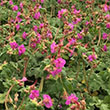
Carmine red blooms. Naturalizing. Groundcover. USDA 5-8.
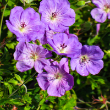
Violet blue flowers. Very beautiful groundcover, border plant or along a walkway. Tolerant of heat and humidity. USDA 5-8
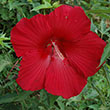
10" crimson blooms. Erect habit. Tolerates wet sites. USDA 5-9
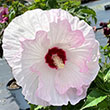
Large white ruffled flowers with a red center and blush pink edges. Upright, shrub-like. USDA 4-9
193 found, showing page 5 of 13











